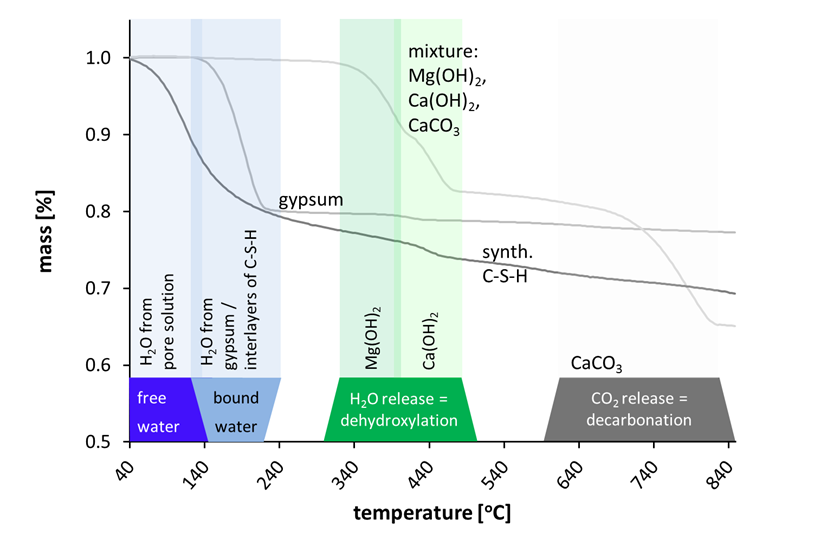The grant from COWIfonden, 340 000 DKK, allows us to purchase a thermogravimetric analysis (TGA) instrument for investigations of cementitious materials at the Department of Chemistry and iNANO at Aarhus University. Additional in-house funding from Associate Professor Jørgen Skibsted will be used to purchase advanced measurement equipment that includes a sample exchanger to maximize the utilization of the instrumentation.
Concrete is the globally most used construction material, as a result of its low price, high strength, long lifetime and general availability. Limestone consists mainly of calcium carbonate (CaCO3) and it is the principal raw material of Portland cement. During heating in the cement kiln, it decomposes and releases CO2. Thus, the application of Portland cement in concrete makes a substantial contribution to the man-made CO2 emissions (5 - 8%) and global warming while providing the backbone of the infrastructure for our society.
In building materials, cement paste is the glue that binds other particles such as sand and stones together. The binding is associated with the hydration of the cement, which occurs gradually after the addition of water to the cement powder, and results in the consecutive formation of water-containing minerals. The properties of cement-based materials originate mainly from the different types of hydration products formed and their spatial arrangement.
The TGA instrument enables us to detect changes in cementitious materials by monitoring its weight loss during heating, which can be used for the quantification of several key minerals in cementitious materials as illustrated the Figure below.

The data obtained from the TGA will be combined with the relative distribution of water between water filled pores as determined by nuclear magnetic resonance spectroscopy (NMR). The aim of this investigation is to elucidate the relationship between the pore-size distribution, chemistry and strength of cementitious materials. This project contributes to the development of new, more sustainable cementitious materials with reduced CO2 emissions during production.
In recent years, our research group at Aarhus University has focused on developments of calcined clays for partial replacement of the Portland cement binder. In this context we have explored structural features on the molecular- and nano-scale level that contribute to the strength and durability of cementitious materials. To unravel these questions, we use different characterization techniques, of which TGA is a quantitative, complementary tool to our NMR investigations. In addition, the TGA instrument will be used in research studies which focus on the durability of concrete to ensure a long service life in harsh chemical environments.
Last but not least, the TGA instrumentation will enrich the education of scientists and engineers at iNANO and the Department of Chemistry, Aarhus University.
Applicant: Wolfgang Kunther
![]()
https://www.cowifonden.com/who-we-are/about/
Carlsbergfondet has granted the group 1.000.000,- DKR for a new solid-state NMR console, which should replace the existing console associated with the 400 MHz (9.4 T) wide-bore magnet. The new console provides principally new radio-frequency (rf) technology that will improve the sensitivity, precision and reliability of the NMR measurements. Moreover, it will give the opportunities for the implementation of a range of new NMR experiments which can provide new information about inorganic materials structure at the molecular level.
The new console and spectrometer will be used in a wide range of studies of inorganic materials, including sustainable cement materials with a low CO2 footprint, heterogeneous catalysts used in the petrochemical industry, and compounds for energy storage.
The new console (Bruker AVANCE-III HD NMR System) will be installed in November 2016.
Applicant: Jørgen Skibsted
